Characteristics of Modern Women’s Handball & Implications for Future Development in the USA
This installment offers research based characteristics of modern women's handball and practical training recommendations, followed by in-depth summaries of recent EHF Championships (Euro '20, '22), IHF World Championships '23, and concluding with author's preface to more broad strategic implications for future development of women's game in the US.
Mariusz Wartalowicz, Ph.D., CSCS
2/13/20259 min read
Demands of modern women's handball game can be considered in five separate but interrelated categories, each important in its own right and deserving in-depth understanding as they will determine both organizational and methodological training approaches for future generations of our female athletes.
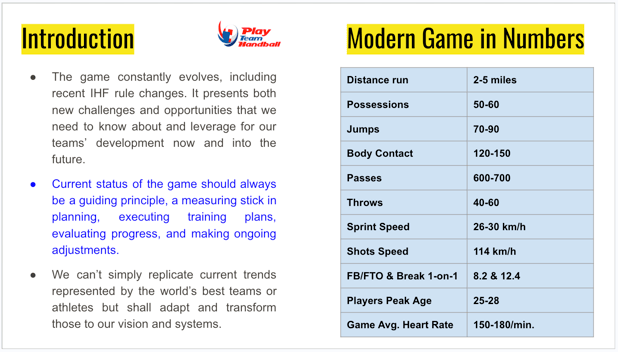

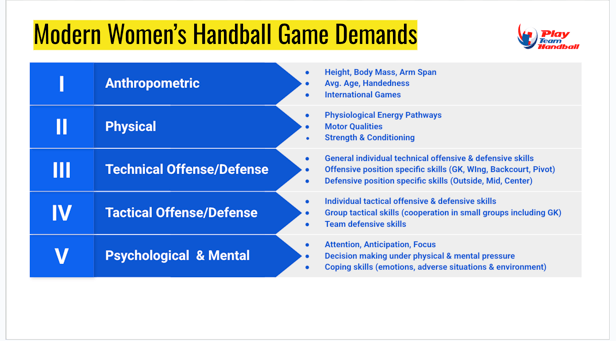

Let's begin by looking at modern women's handball game in numbers. Even from this quick snapshot it becomes clear that today's handball belongs to the most dynamic team sports in the world. In the US we must remain serious students of the game and use it as a starting point to build our own unique American Way of playing handball. I consider the following presentation as a "food" for thought for our domestic coaches, and athletes who often have to wear a coach hat, willing, interested, and self-motivated to start chipping away from the huge list of deficiencies currently plaguing our training practice. We can do much better in equipping our players with individual, group, team skills, teaching them how to make better creative decisions, and providing conditioning necessary to compete on a higher level. There is no easy way forward for us in the US but continuation on the same path guarantees only the same disastrous results.
Anthropometric demands listed below, especially top players' range and average height, can in most practical way become a rough guideline for our new prospective athlete recruiting efforts. Handedness is also an important factor because right backcourt and right wing position specificity. All variables should be considered holistically and thought as pieces for theoretical preferable body type with clear understanding of position specific requirements.
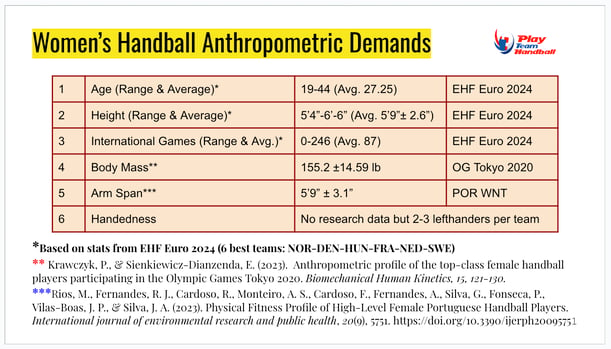

I divided modern handball physical demands into three interrelated categories. It is impossible to prepare current or future athletes to meet the game demands without not only understanding of the underlying physiological processes and key motor tasks involved in today's game but even more importantly ability to apply appropriate training modalities to achieve desirable Strength & Conditioning preparedness qualities.
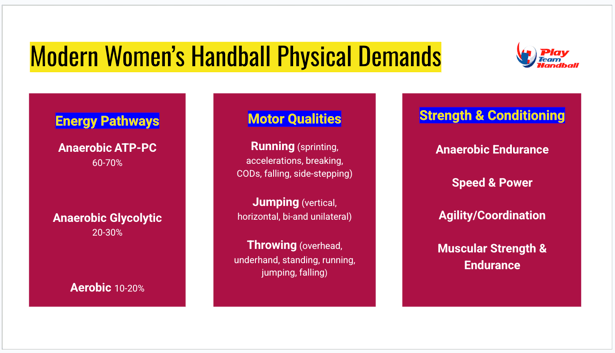

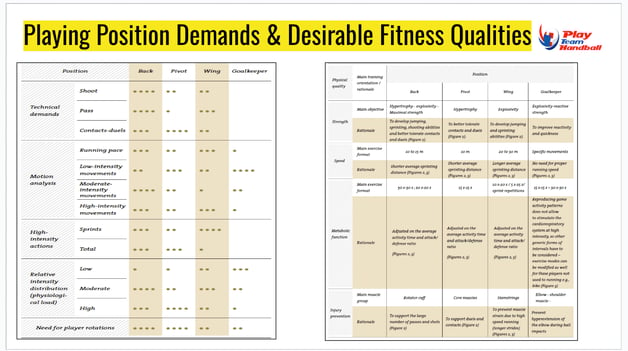


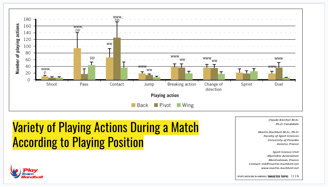
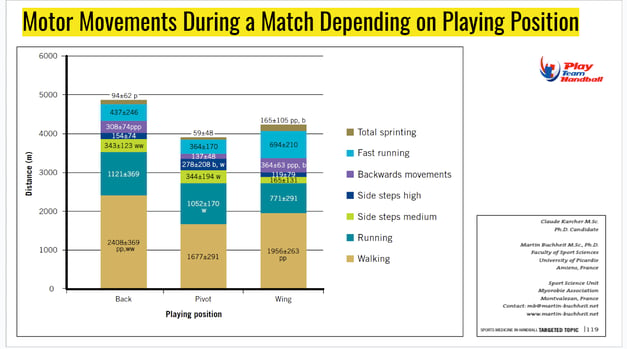

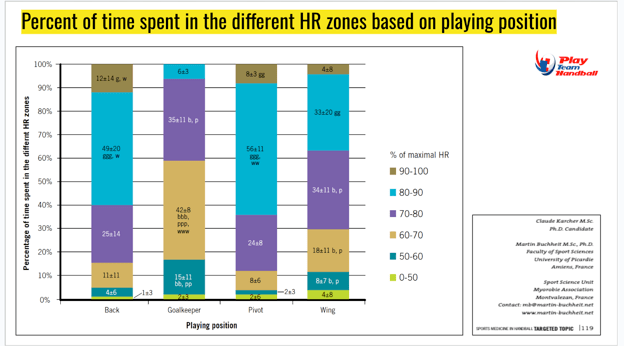

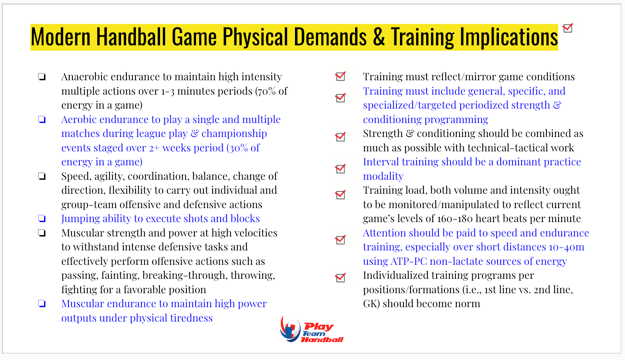

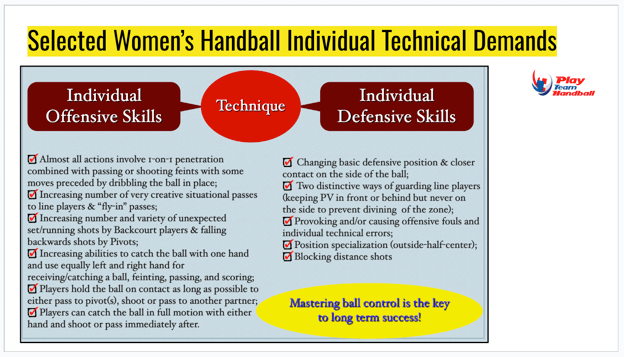

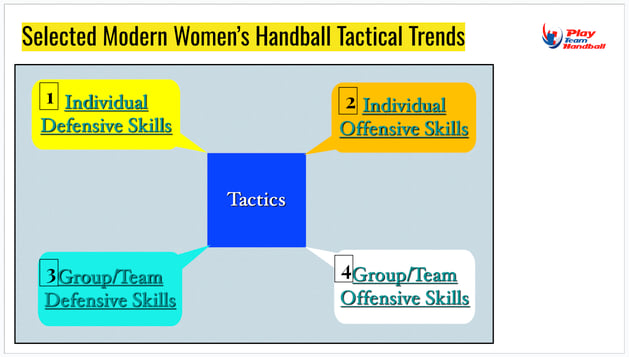

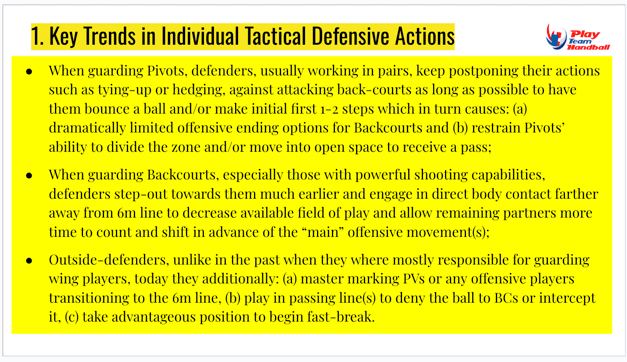

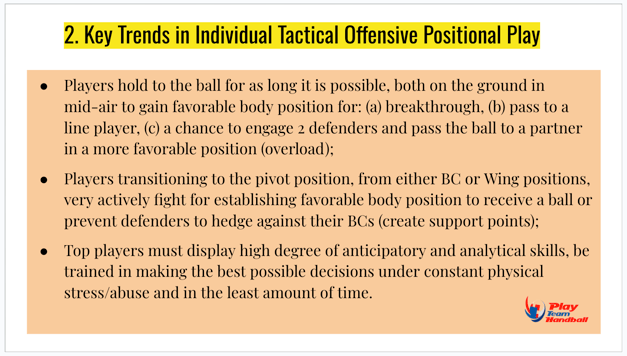

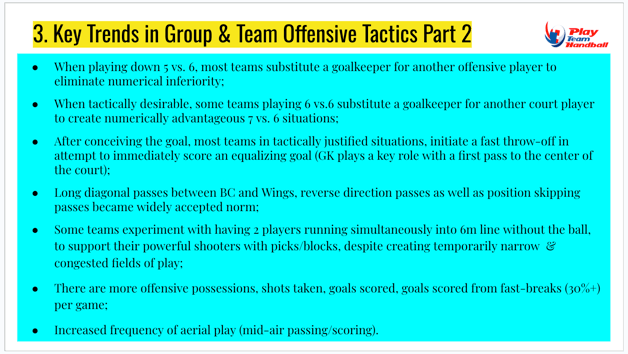

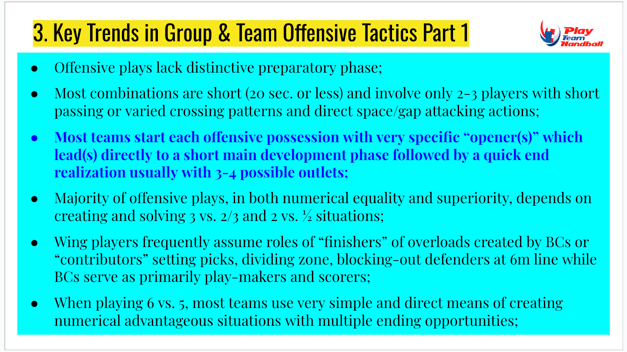

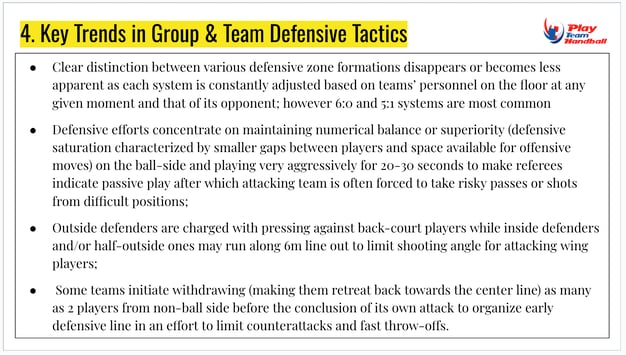

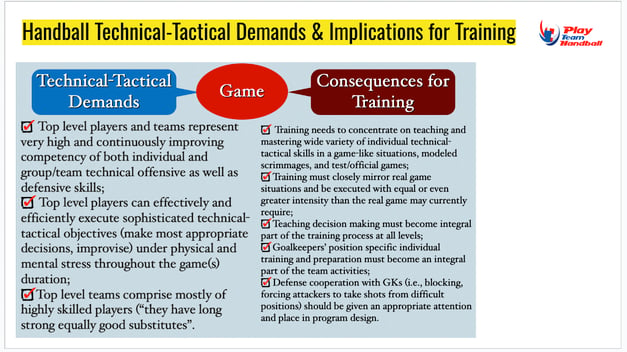

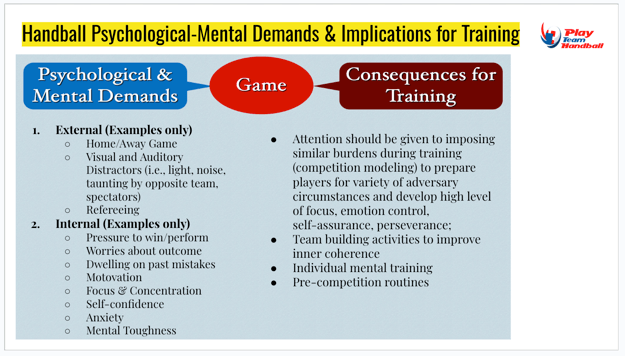

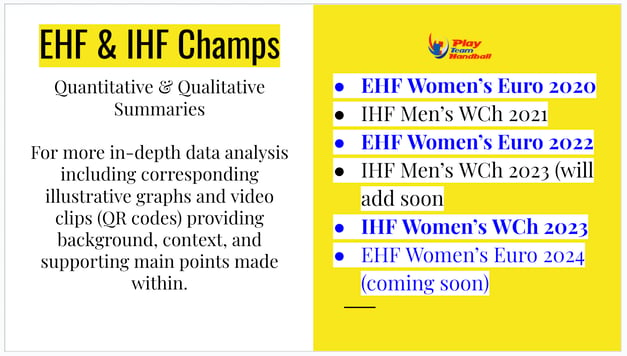



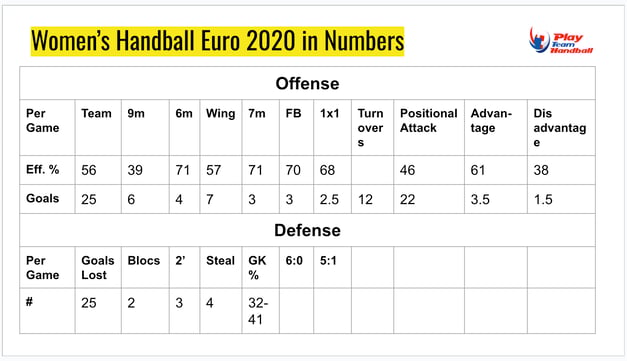

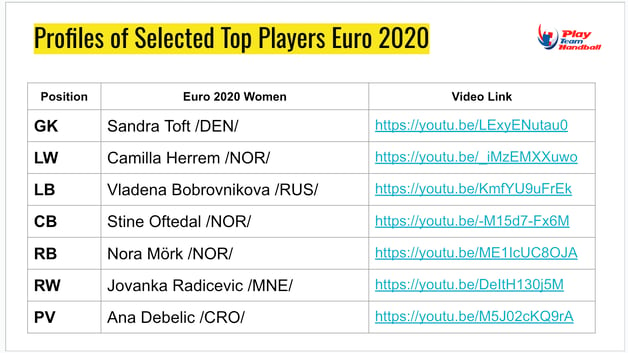

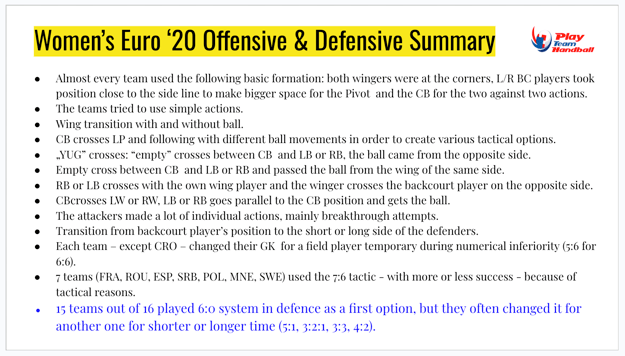

It is equally essential to consider the aforementioned game's physical demands in context of handball specific playing positions: goalkeeper, wing, backcourt and pivot or line player. Each position has very distinctive demands which in turn will determine the general and specific strength & conditioning training regimens. The following four visuals out of Karcher & Bucheit research illustrate those position specific needs and main training orientation/profile required.
Below I summarize handball's physical fitness requirements for high level competition excellence and corresponding training pathways that our coaches should start considering when thinking about and planning their practice sessions, however infrequent or limited due to space and other logistic constrains
Next, we will take a look at selected individual technical offensive and defensive skills critical, in my humble opinion, for breaking away from current archaic way we play handball in the US. Most of our players, including National Team members, are very limited in what they can do technically on the court and it becomes even worse under physical, and mental duress. Those limitations are the root cause for most of the unforced by the opponent technical turnovers, and overall very low effectiveness of both our offense and defense. To begin fixing it, we need not only to exponentially improve our players' individual technical skill arsenal to become offensive and defensive threats but also expand their conceptual capacities of reading the game, making quick decisions to effectively execute tactical tasks.
Technical skill development needs to go hand in hand with achieving tactical prowess. The following section synthesizes key tactical trends in modern women's handball in four groups of defensive actions labeled in different colors: (1-yellow) individual defense, (2-peach) individual offense, (3-blue) group/team defense, and (4 white) group/team offense. Within each group I offer just a few consequential points that should help our coaches rethink the structure and content of their annual programming and practices. Our sad reality is that domestic recreational clubs/teams, consisting mostly of players born-raised-trained elsewhere, are not truly interested in continuing development. However, even if so, efforts to continuously raise the bar in training in terms of quality will provide any and all members with unquestionable benefits such as fun, growing participation, increased technical abilities, and motivation to name just a few. I am a strong proponent of making small continuous disciplined focused changes.
The implications of all those trends are pretty simple in theory but much more difficult to advance in practice. Modern training must concentrate on technical-tactical skill development, tested, improved, and mastered in wide range of game-like situations under varying conditions (i.e., time, space, physical duress) teaching/"forcing" players to make the best split-second decisions possible, anticipate the flow of the game, and adapt to the situations at hand. General individual level of skill mastery is a prerequisite for position specific training. We face enormous challenges in coaching education but if we concentrate on just a few most dedicated and motivated coaches we have, there is a chance to set good examples for others to follow.
The following bullet points summarize individual tactical defensive actions/roles/behaviors of center, mid, and outside defenders against their opponents in Backcourt, Line, and, Wing positions.
Similarly, today's offensive game demands from top performers to be tactically multidimensional with superior analytical and decision making skills. Our reality is the complete opposite where even our best players lack fundamental motor, passing, fainting, shooting skills.
Offensive tactics have been evolving into simple quick powerful moves based on individual actions initiated by BCs and cooperation between 2-3 players in often limited space with the increasing role of line players considered more frequently as 2nd playmakers. Backcourts are becoming more versatile and play equally well in all three positions. They excel in cooperation with their line-players, either by exploiting gaps created for them to break-through or by passing the ball to line-players. Center-back is still nominally a designated playmaker. However, due to tactically driven frequent "empty" crosses and changes between left-center-backcourts, all three can operate effectively for short periods of time in out-of-position situations. The list below, brings up a few more specific modern trends in group/team offensive tactics. Hope is not the strategy.
Most top teams use different variants of 6-0 and 5-1 zone formations. Those tactical variants are driven by each country's specific long-term athlete development models that prepare players from an early age to fit into the specific "style" of zone defending. Yet, despite those style shifts, all top teams exhibit deep understanding and execution of very clear defensive roles by outside, mid, and center defenders combined, with trained almost to perfection, cooperation between defenders and their goalkeepers. In defending against fast-breaks, most teams begin a strategic early retreat of 2-3 players before the shot is taken by their teammate. We must go back to the beginning and reteach ABCs to our existing players and teach ABCs correctly to new potential players from the beginning.
In the following section I present quantitative and qualitative summaries of recent EHF Women's European Championships ('20, '22) and '23 IHF World Championships. Interested coaches can find full analysis in publications issued by respected organizations on their digital platforms. I extracted from those lengthy documents key data, graphs, and video links that best illustrate, in my opinion, the way handball is rapidly evolving into extremely fast, dynamic and physical, attack oriented and dominated team sport. For nations such as the USA, still dreaming to emerge from the mediocre handball position in the Pan American region, it should become a starting point for facing the brutal truth, beginning disciplined critical thinking followed by taking disciplined action to make significant changes in the way handball is developed and played in our country. I believe that the summaries are self-explanatory, informative enough, ready for training implementation without additional commentary. Some of the links may not work out of this presentation but they will if the readers go directly to the source and scan the QR codes directly with their phones. Here are the links to the original articles:


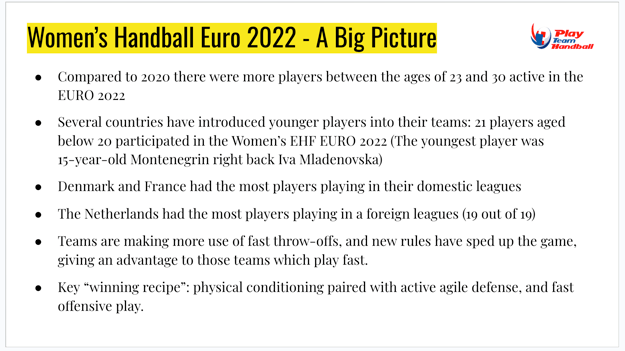

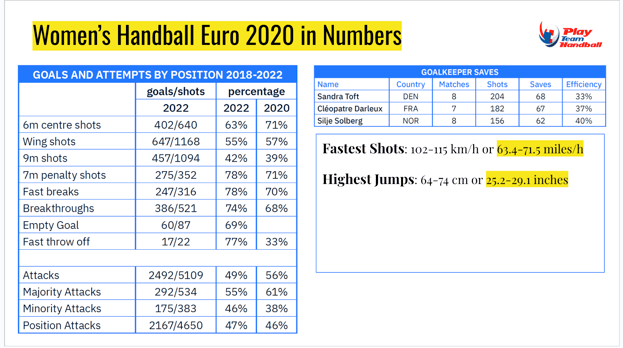

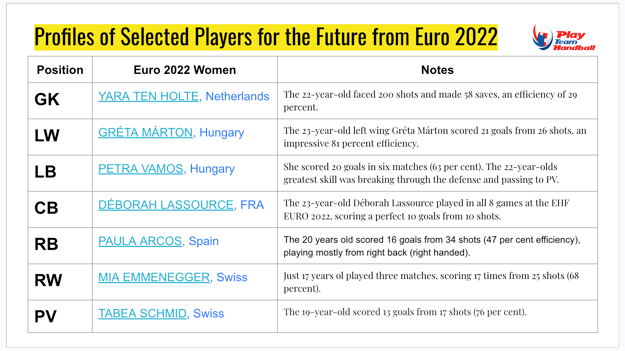

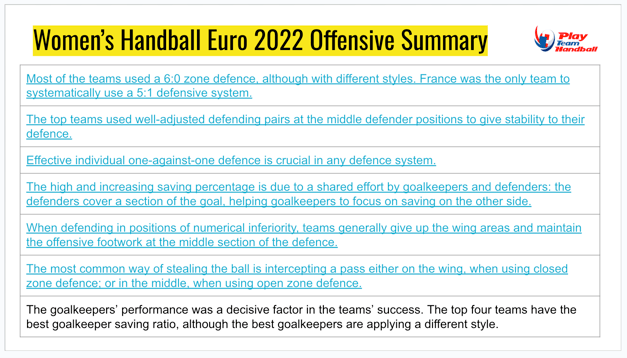

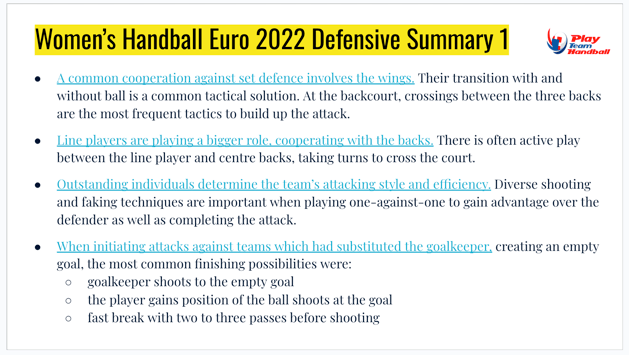

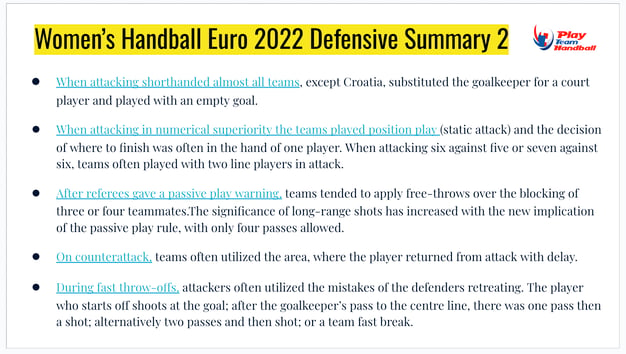

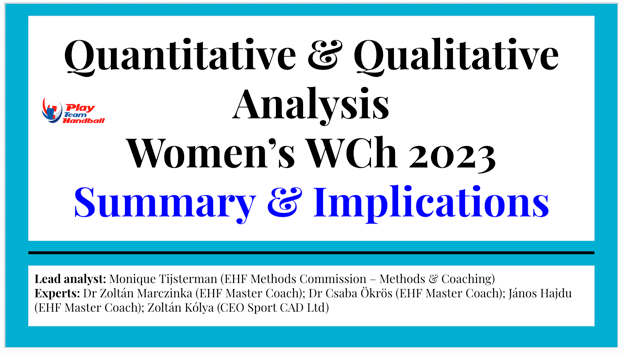

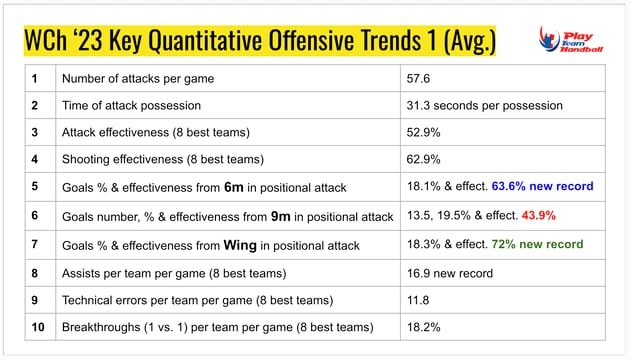

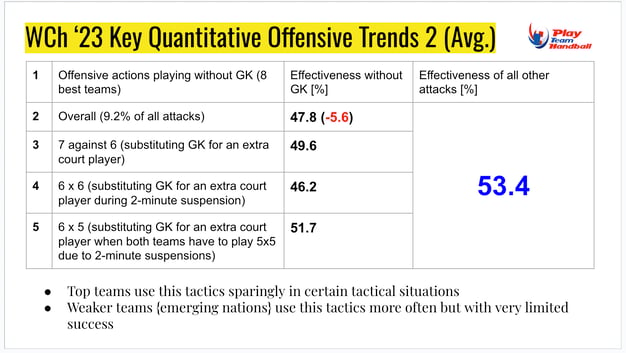

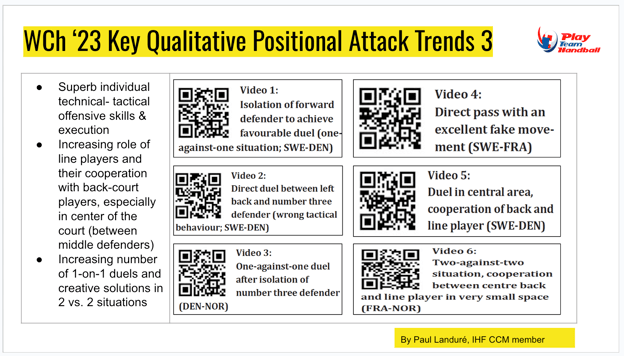

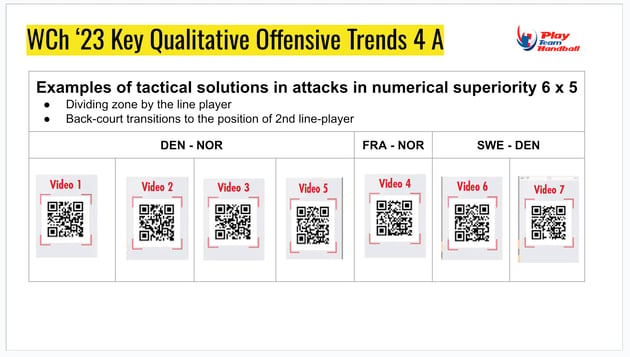

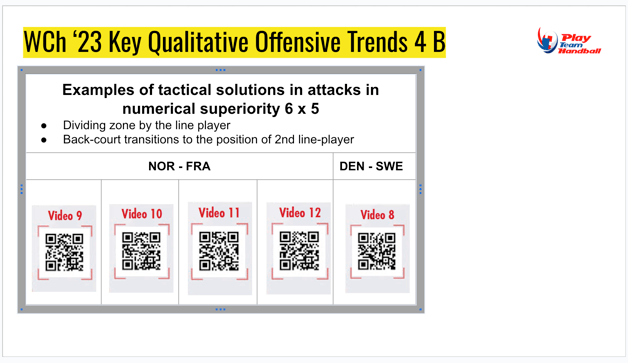

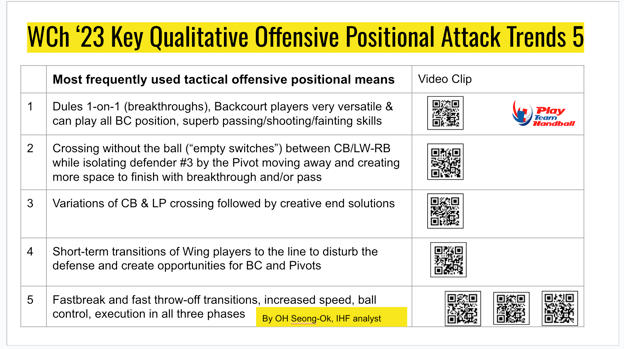

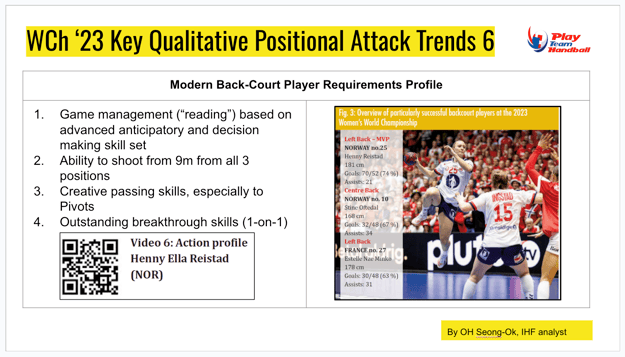

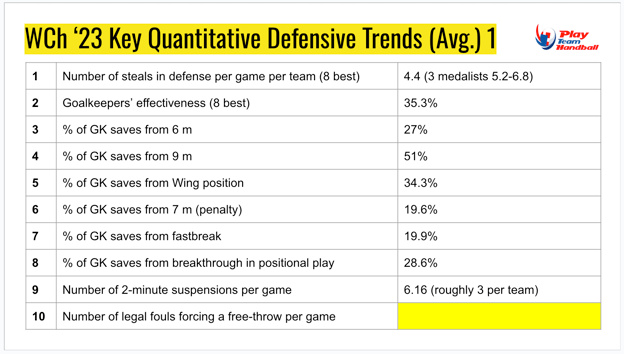

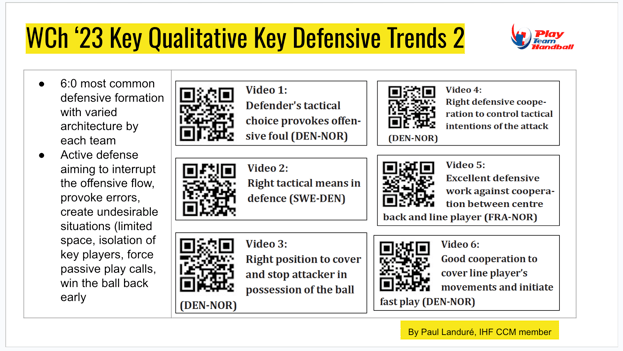

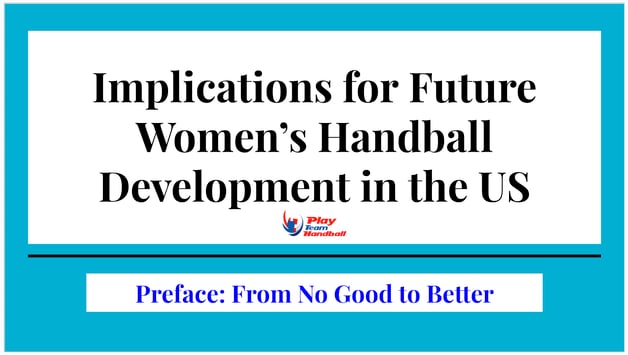

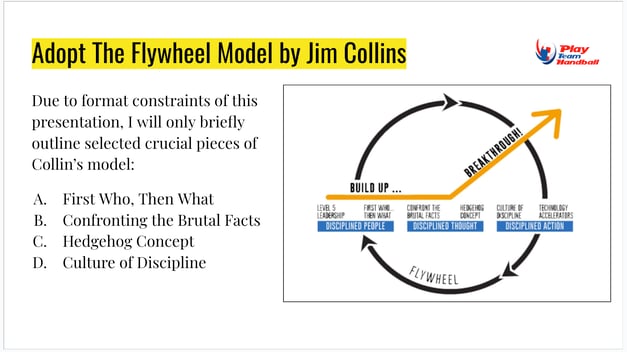


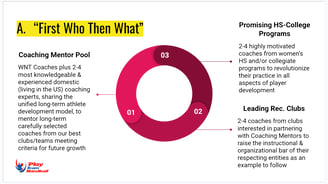
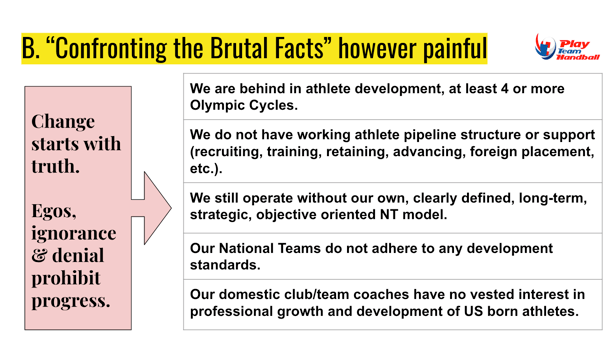

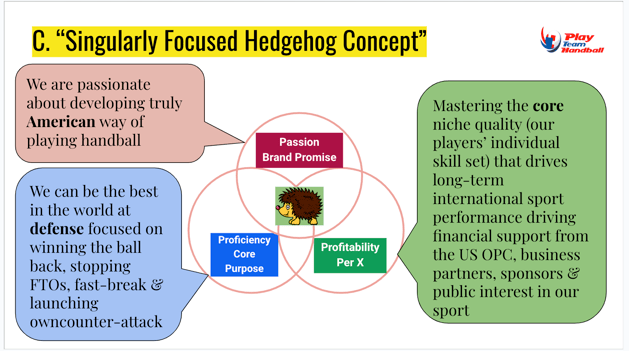

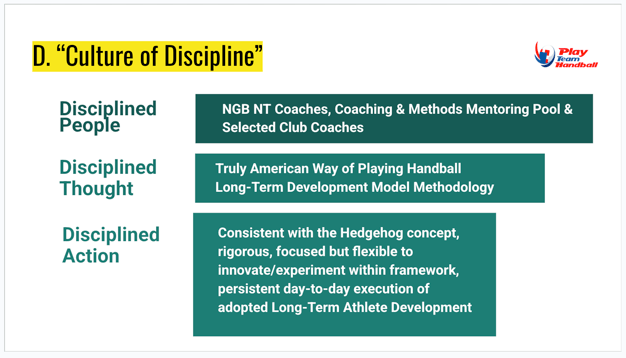

Here I only broadly introduce the path forward for future women's handball development in the US as I intend to write another piece on the subject. I have advocated for the complete overhaul of our National Team programs since early 2001, when I coached our MNT during World Championships in France, even before publication of Collins revolutionary book in October of that year. Unfortunately, my calls for gradual but radical reforms of our NT programs fell on deaf ears and 25 years later we are at the same starting point. I tried again between 2008-2014 during my tenure as the USATH Technical Director and as recently as in 2023 with the same limited outcome but for different reasons. I strongly believe that Collin's "Good to Great" offers to us a very well-thought and practice proven model to break the vicious circle of international performance failures. If the nation of Greenland, with a total of 56,000 citizens, can put together a team to defeat us recently 12-27 (5-16), there can't be more excuses for us not to take action. However, we have four more critical steps to take before beginning any corrective action. There is no way around this process if we are serious about making any meaningful and lasting improvements. We owe it to our former, current, and future players.
Play Team Handball
playteamhandball@gmail.com
817-666-2206
2024 © Play Team Handball. All Rights Reserved.
